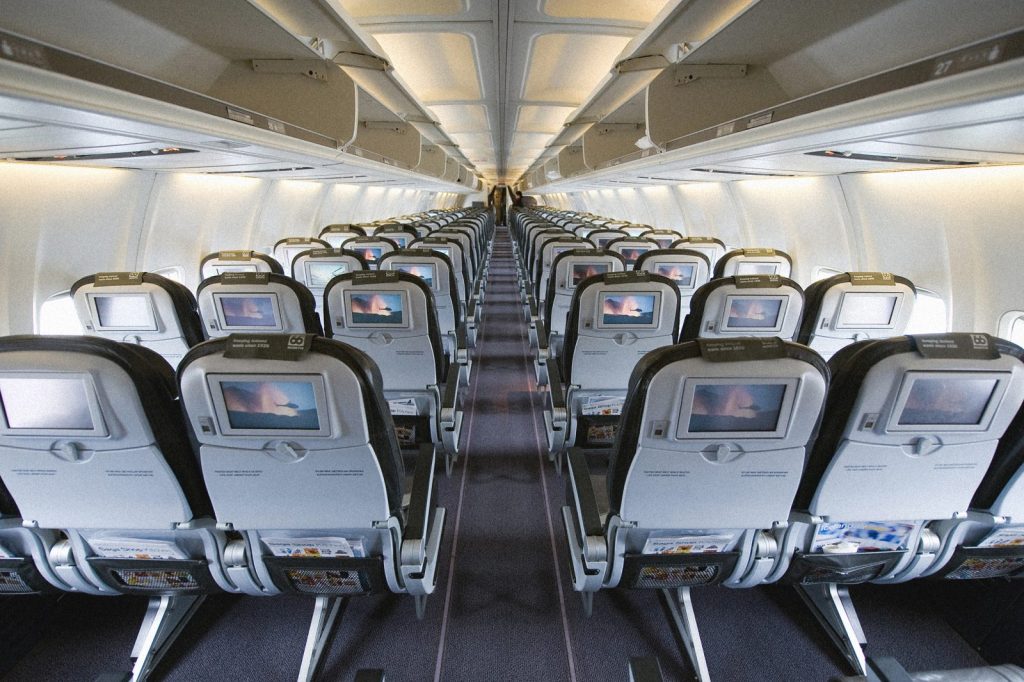
Airlines need to focus on gaining and maintaining the public’s trust in the wake of COVID-19. These marketing tactics can help airlines reach that goal.
Even when compared to many other industries, the coronavirus crisis has hit airlines particularly hard. Airline research from Reuters shows that seat capacity for international flights has dropped to half when compared to one year ago. Even more unsettling, storage buildings now house about one-half of all planes in the world. The largest airlines have already predicted that they will emerge from this crisis as smaller companies, and industry experts predict that some will not survive at all. For certain, marketing geared towards gaining and maintaining the public’s trust will be critical for airlines after the coronavirus.
Make Plans to Build Trust Before and Not After the Coronavirus
Even though airlines may have trimmed their schedules, they’re still departing, landing, serving customers, and working hard to ensure passenger and crew safety during these trying times. According to Aviation Technology, travelers still need to fly for repatriation to their homes and for other essential reasons.
Colleen Costello serves as the CEO for a company that embeds germ-killing technology into lights, Vital Vio. In her interview with Aviation Technology she said that she worked with several airlines that were aggressively tackling the challenge through screening, chemical disinfectants, and the sort of technology that her company supplies. She also mentioned the importance of having airlines clearly communicate with passengers, crew, and other stakeholders about how seriously they take the threat and how important safety measures have become.
For instance, she mentioned that a pre-coronavirus survey found that two out of five respondents had admitted to flying when they were ill and never wiping down surfaces or even their phone when they traveled. So, airlines can find plenty of opportunities to educate fliers about best practices for traveling and of course, to get more serious about enforcing and encouraging those measures. As a simple example, airlines could provide complimentary wipes and hand sanitizer for planes and boarding areas for crew and passengers. Emails, website notices, ads, social site postings, and even press releases can provide valuable safety tips and information about the steps the airline has taken to protect their customers and employees.
Audience Targeting for Airlines
In order to come up with good audience targeting for airlines after the coronavirus, it’s important to predict what travel will be like. It’s safe to assume that the bulk of the first post-corona travelers will fly for work and not discretionary trips. That’s particularly true for international flights. Forbes actually predicted that family travel will eventually resume, stronger than ever, as people take their delayed vacations or trips to visit family and friends. However, especially at first, people may choose short, domestic travel for vacations in order to stay closer to home and conserve budgets.
With that in mind, a couple of post-coronavirus targeting tactics may prevail:
- B2B travel: Look at the example of the way Cathay Pacific used LinkedIn to target business travelers. Since the airline hoped to increase bookings on Asian flights, they targeted members of LinkedIn groups that focused on Asian business. The benefited from using polls to promote their loyalty program and the extra exposure they gained from LinkedIn recommendations. LinkedIn also lets companies post articles to their own pages to attract attention by highlighting their own efforts to protect travelers. The combination of ads and organic social attention can prove very potent.
- Personal travel: Some airlines have benefited by using the targeting and retargeting options on such popular travel sites as Expedia. The platform allows advertisers to gather information to retarget to people who search for specific trips without purchasing flights, even when they continue to use the internet away from the original website. This helps reinforce the airline’s brand and increases the chance of engaging travelers. To learn more, it may help to consider how Korean and Hainan Airlines benefits from this strategy with Expedia to gain brand recognition from fliers who may not have considered booking with these two airlines before.
Since many businesses and individuals will suffer financial strain during the crisis. Airlines may not always need to compete with the cheapest tickets, but they should always stress why they offer a good value. Customers will still have an interest in loyalty programs, customer service, routes, schedules, amenities, and ticket prices.
For some time after the crisis passes, it’s also safe to predict that fliers will want to know how well airlines responded by protecting travelers and employees. This can include protection from disease, but it may also include adding in more generous policies for people who need to reschedule trips. Adding travel insurance with generous cancellation products can help develop trust and even provide airlines with an upsell to generate a little extra revenue.
It’s Time to Start Planning for Post-Coronavirus Airline Business
Almost everybody agrees that airlines will have to struggle over the coming months because of travel restrictions. Even after the worst of the crisis passes, it may take some time for travelers to feel comfortable leaving home. Likewise, businesses may find ways to reduce nonessential travel. Still, plenty of transportation experts feel confident that after some time, the business will enjoy another boom as both companies and individuals decide to make up for lost time. Airlines can position themselves well to enjoy this future surge by making certain that they represent their brands as well as possible during the crisis and find the right customers to target afterwards.



